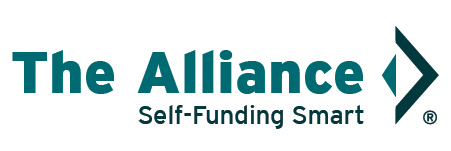Employers Can Boost Their Mental Health Benefits and Save $44 Billion
By: Paul Roelke, Manager of Member Services, The Alliance
 Boosting your mental health benefits this year may be a good idea. 1-in-5 people experience a mental health issue each year, which can cause serious health issues down the line.
Boosting your mental health benefits this year may be a good idea. 1-in-5 people experience a mental health issue each year, which can cause serious health issues down the line.
Employers don’t just have a social or moral obligation to help improve mental health benefits, either. When it's all said and done, depression alone costs employers $44 billion annually.
But simply offering an EAP and calling it a day won’t cut it. The key to making improvements in mental health is to combine affordable, individualized care options and remove barriers to them.
Stop the Stigma
One of the biggest barriers employees face in getting help is the stigma associated with mental health illness. An employee may conceal their symptoms or be completely unaware they have a mental health illness due to lack of education and resources.
One way employers can create trust within their workforce is by implementing practical programs that are designed reduce that stigma, like Stamp Out Stigma and Make It OK.
Empowerment Through Education
If reducing stigma is the first step towards improving employees’ mental health, the next is by offering education, resources, and work programs that teach them to recognize and address symptoms.
Mental health requires compassion and understanding, and education goes a long way towards making employees feel more comfortable discussing these issues with their doctor. Employers can “normalize” these issues by explaining the risks of untreated illness, the benefits of treatment, and how 18% of us suffer from depression.
Posting informational resources on bulletin boards, the company intranet, and the lunchroom serve as good reminders for employees to check in with themselves more often. (Flyers are not a catch-all, but they do help staff recognize the symptoms of mental illness, how to cope with them, and how to seek care. Plus, they show staff that employee mental health is a topic their employer understands and cares about.) Ensure these resources are bilingual as necessary.
Audit Your Network
Additionally, employers should audit their network to ensure their employees have broad access to affordable, in-network resources. (The Alliance’s Comprehensive Network added 350 mental health providers in 2020 alone.) Removing or reducing co-pays for counseling and certain prescription drugs will also improve access.
Roughly half of counties across the U.S. have no psychiatrists, so ensure your plan offers telehealth services, which eliminates barriers – like transportation – while offering comparable results.
Consistent Frequency
Because employees may be apprehensive to seek help, regularly reminding them about the severity of unchecked stress, and to talk to their doctor, is critical.
Increasing the frequency and channels in which you communicate those messages tells employees their wellbeing is a priority. Consider using open enrollment, town halls, lunch-and-learns, etc., to talk about and share resources.
Confidentiality is Key
Lastly, employees need to be assured that by seeking treatment – especially for something like substance abuse – their information will be kept private and there won’t be consequences by their employer or coworkers.
